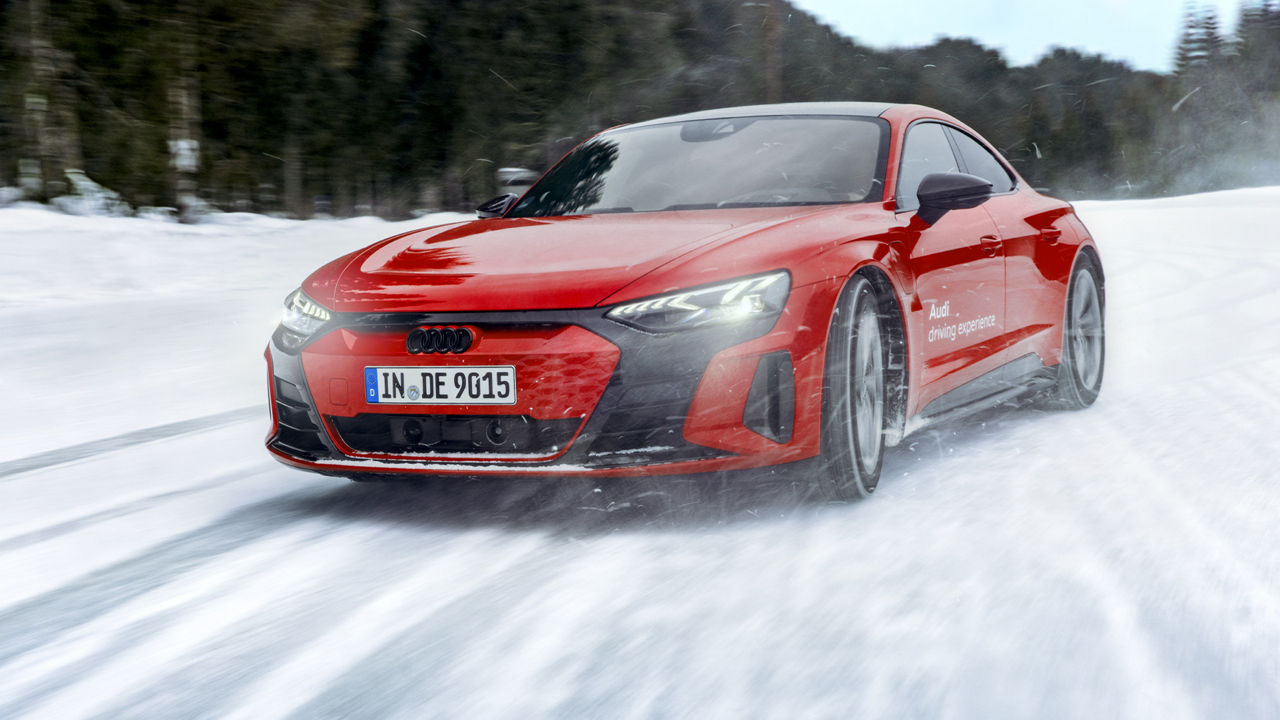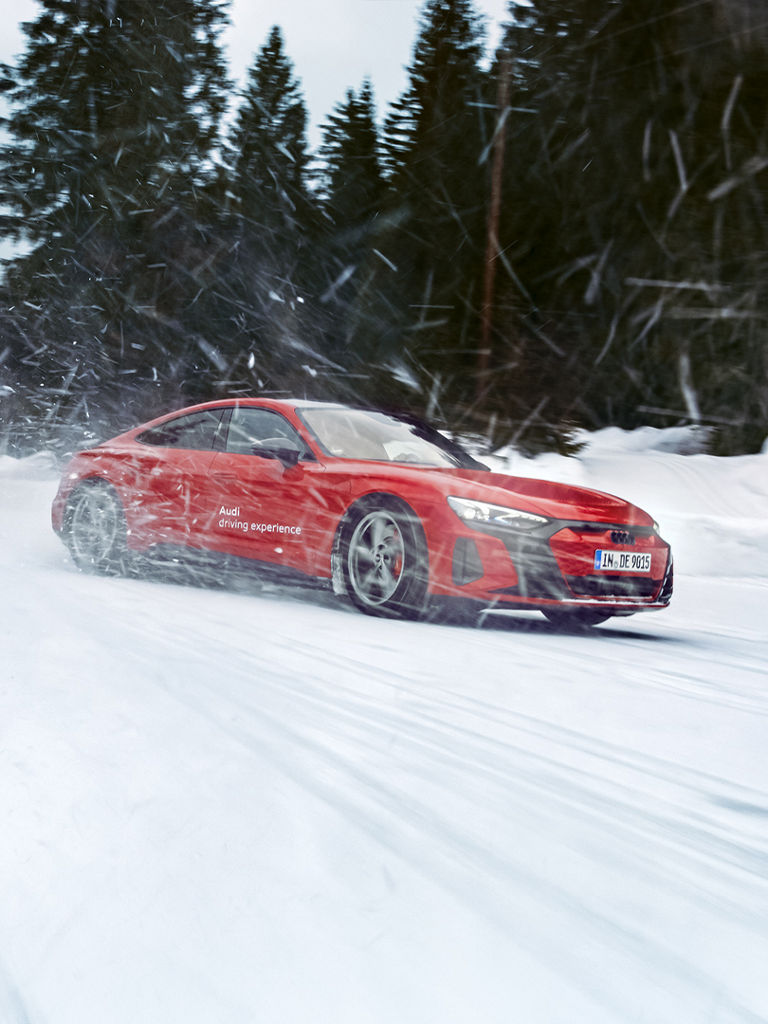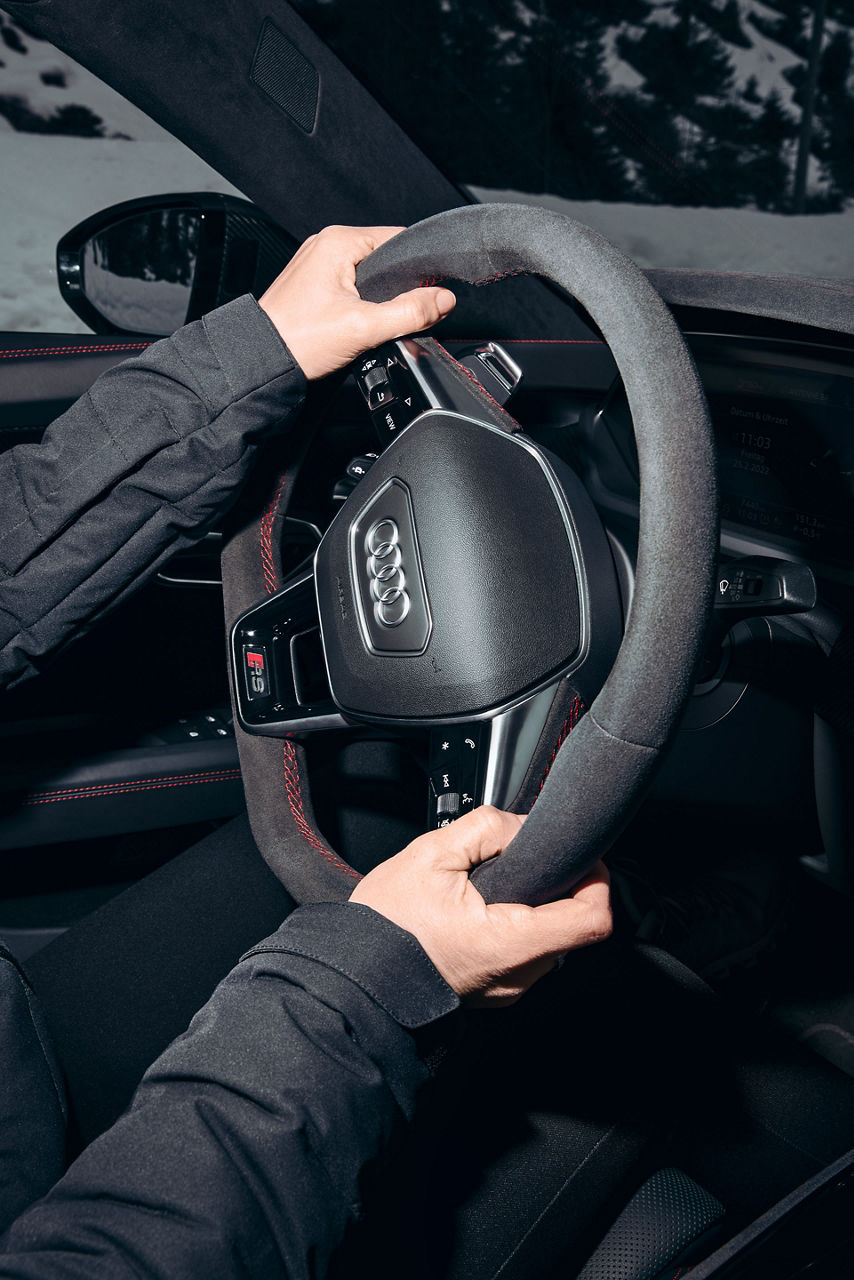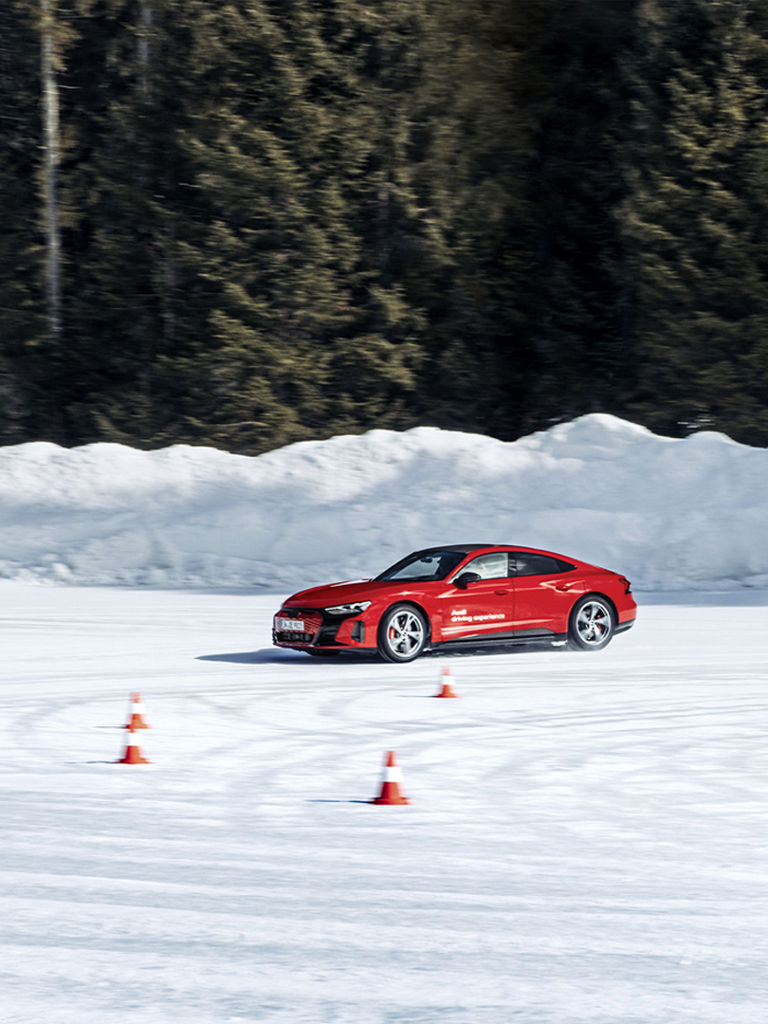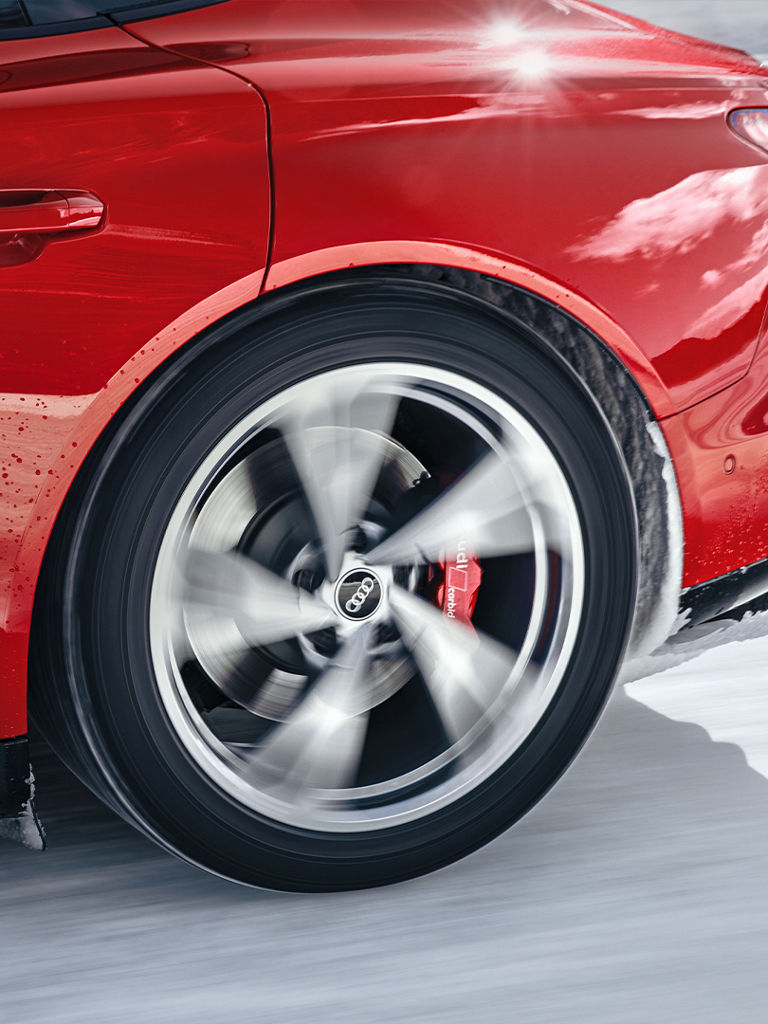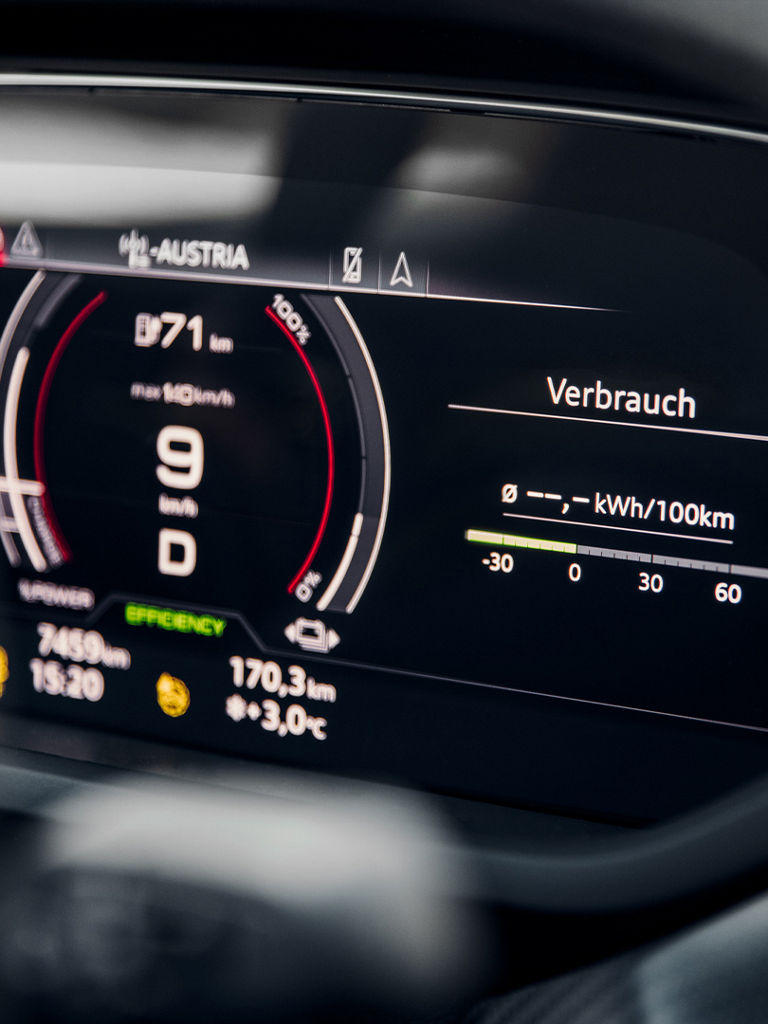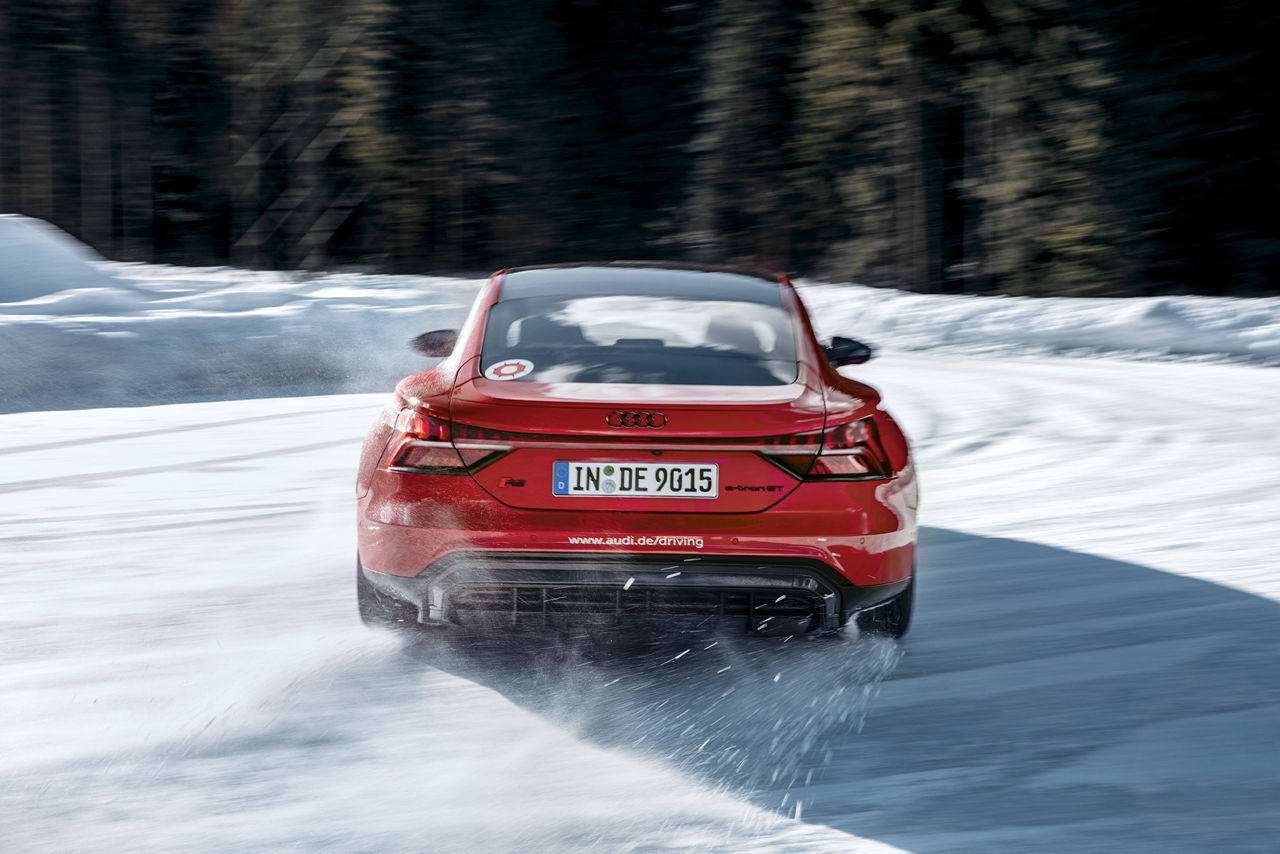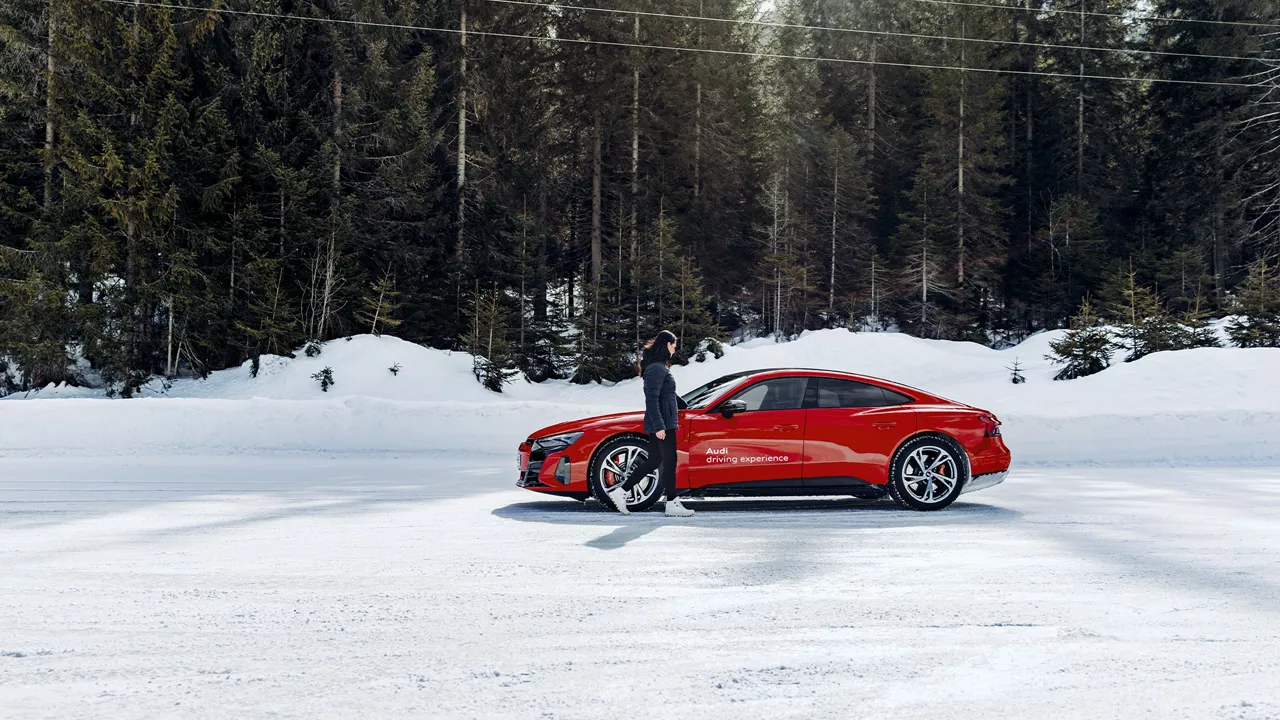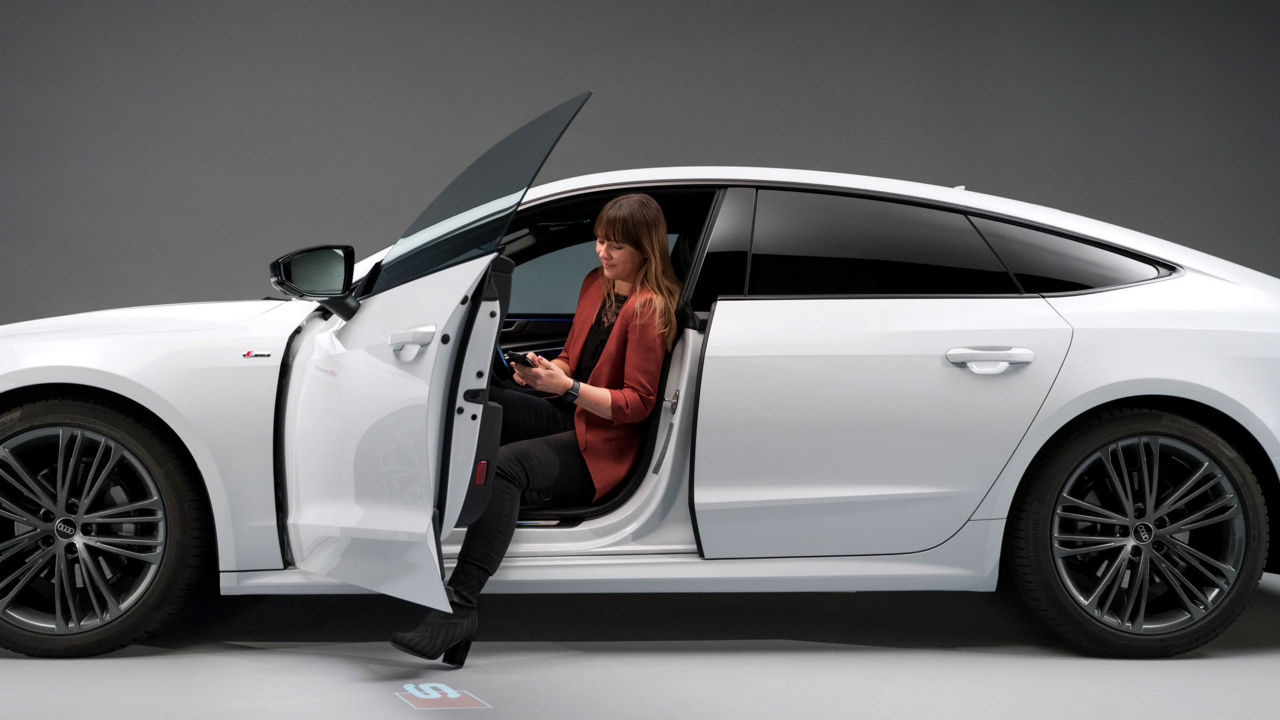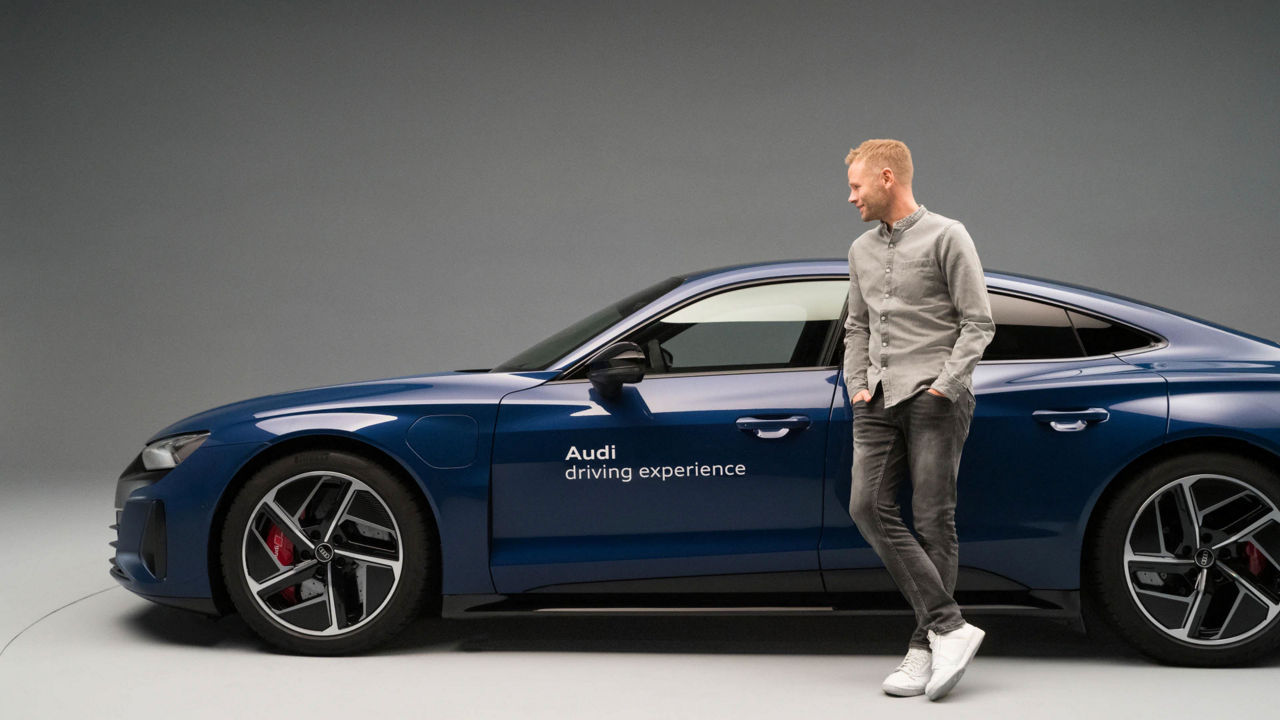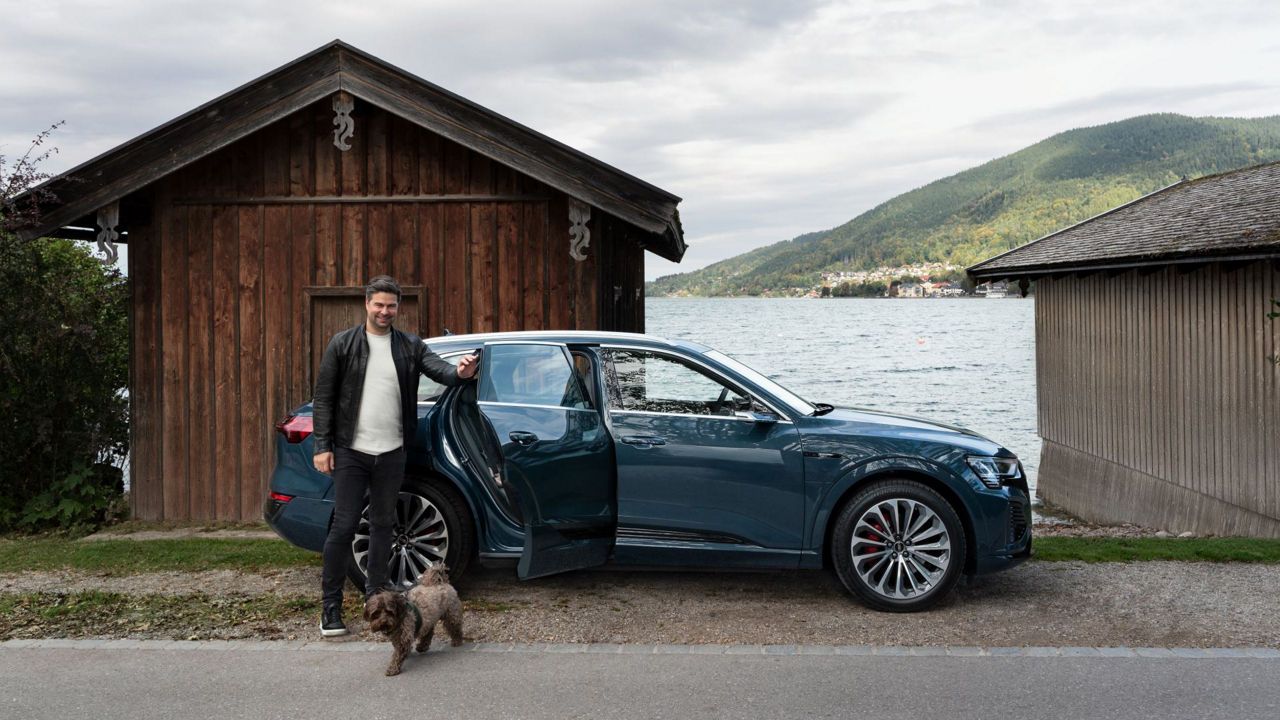As a ski racer, Anna Veith always pushed the limits in her sport. But she nods when Eichhorner cautions her, “Less is more, especially in slippery conditions. Steer calmly and precisely, only turning the wheel as much as is necessary. It’s also important to remember that, in an electric car, you should accelerate proportionally to the increase in speed.” In other words, pull away slowly and only put your foot down when the needle has risen. Why? For the simple reason that electric vehicles produce tremendous torque. Accelerate on snow the way you do on a dry road and you risk spinning the wheels, sending the car off in a direction other than where you want to go.
But take it slow at first, accelerating sensitively, and you’ll be rewarded with impressive traction on snow. This is because electric quattro models, such as the Audi RS e-tron GT have individually controlled electric motors on the front and rear axles that distribute power even faster. In fact, even rear-wheel-drive e-models, including the Audi Q4 e-tron, boast greater traction than their combustion-driven counterparts. Compared to internal combustion vehicles with similar external dimensions, purely electric vehicles usually have a faster controllable traction control and a larger wheelbase. With the battery unit located in the centre of the vehicle, an almost ideal static wheel load is created. When accelerating, the wheel load then shifts dynamically to the rear – which, in the case of the Audi Q4 e-tron³, means to the driven axle. The performance of electric cars rests on a simple equation – more weight on the driven axle translates into greater acceleration and more grip - even going uphill
